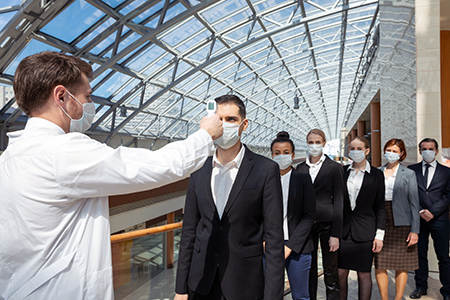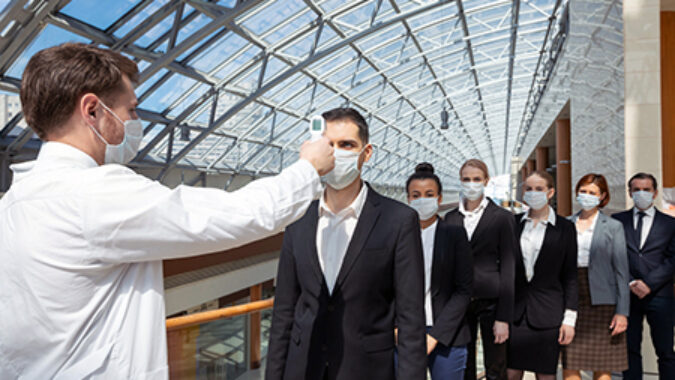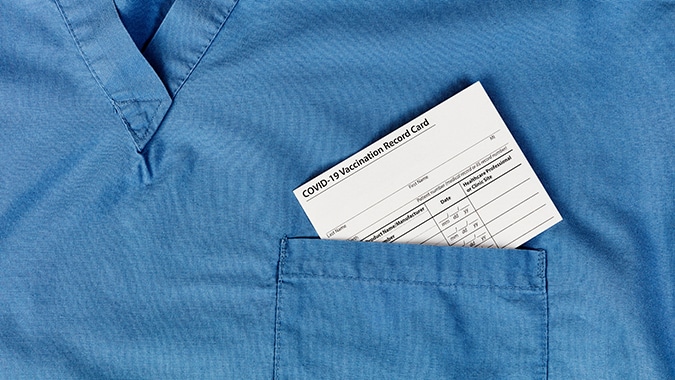 As New Jersey moves ahead with the gradual lifting of COVID-19 restrictions, facility managers and tenants in large commercial buildings looking forward to reoccupancy have a myriad of preparations to make and should keep in mind some products they’ll need may have long lead times for delivery.
As New Jersey moves ahead with the gradual lifting of COVID-19 restrictions, facility managers and tenants in large commercial buildings looking forward to reoccupancy have a myriad of preparations to make and should keep in mind some products they’ll need may have long lead times for delivery.
Christina “Tina” Honthy, director of asset management for SJP Properties, said during an NJBIA webinar on Thursday that real estate experts expect large commercial buildings to be 50% reoccupied six months from now if COVID-19 restrictions continue to ease and more businesses permit employees to return. Some of SJP’s tenants are starting to increase office reoccupancy and larger tenants are hoping to bring back 25% of their staff after Labor Day, she said.
Before that happens, businesses must decide if modifications are needed to building equipment, such as the installation of automatic bathroom fixtures and upgraded HVAC filter systems. Companies may need to reconfigure work spaces, lobbies, conference rooms, cafeterias, and other common areas. Office procedures should be overhauled and personal protective equipment and products ordered.
“Your employees want to be reassured and have their fears alleviated that you have taken every precaution to welcome them back into your offices and make their environments safe,” Honthy said.
Decisions on health screenings to prevent the spread of COVID-19 in the office are at the top of the to-do list. Should employees be required to use a smartphone app before leaving for work to self-report if they are feverish, have other COVID-19 symptoms, or have been exposed to someone who is sick? Or should the company screen employees for fever on site using HR personnel or a third-party nurse?
Companies are encouraged to create a face-covering policy. Will masks be required to be worn inside the office? If so, must the masks be worn all day or just when the employee leaves his or her designated work area? Will employees be permitted to wear homemade or custom face masks, or will they be expected to use one their company provides?
“We have a tenant who is adamant about supplying the masks to employees because they don’t want employees to come in with masks that have cartoons or words on them that may be considered inappropriate,” Honthy said.
Companies should start thinking about how to reconfigure internal office space to facilitate social distancing, she said. New procedures may be needed for using elevators and staircases, such as designating them up-only or down-only, to reduce encounters. Supplies need to be ordered such as face masks, gloves, COVID-19 signage and disinfectant stands that hold alcohol-based hand sanitizer.
“You can get the pump bottles of hand sanitizer if you want, but those are easily removed in an office space, and can be stolen,” Honthy said. “We’ve found that having an actual physical station is better to keep the product on hand.”
She advised businesses to order disinfectant stations and other supplies well ahead of the date they expect employees to return because products manufactured overseas have extended shipping delays. Personal protective equipment, such as masks, should be ordered right away to avoid supply shortages.
Cleaning and janitorial services, especially for “high-touch areas” in offices, may need to be stepped up as well, Honthy said. Tenants in large office buildings should start familiarizing themselves with the terms of their lease and speak to landlords about the scope of the cleaning provided, whether the level of cleaning will be enhanced because of COVID-19, and whether there will be an added cost.
Honthy said SJP Properties has provided its tenants with a “Re-Occupancy Best Practices” guidebook that is customized for each SJP property.
“Every property is different,” Honthy said. “They have different types of lobbies, elevators, and ingress and egress areas. Some have loading docks, cafeterias and fitness centers and some don’t.”
“SJP preferred to make our guidebooks customized for each of our properties and that took a lot of work,” Honthy said. “Obviously, we had to work with all of our managers and all of our engineers to ensure that the information was accurate. So, for all of you who have not yet done so, I think it’s very important to start thinking about what the guidelines should be for your building.”
To view the entire webinar, go here.

